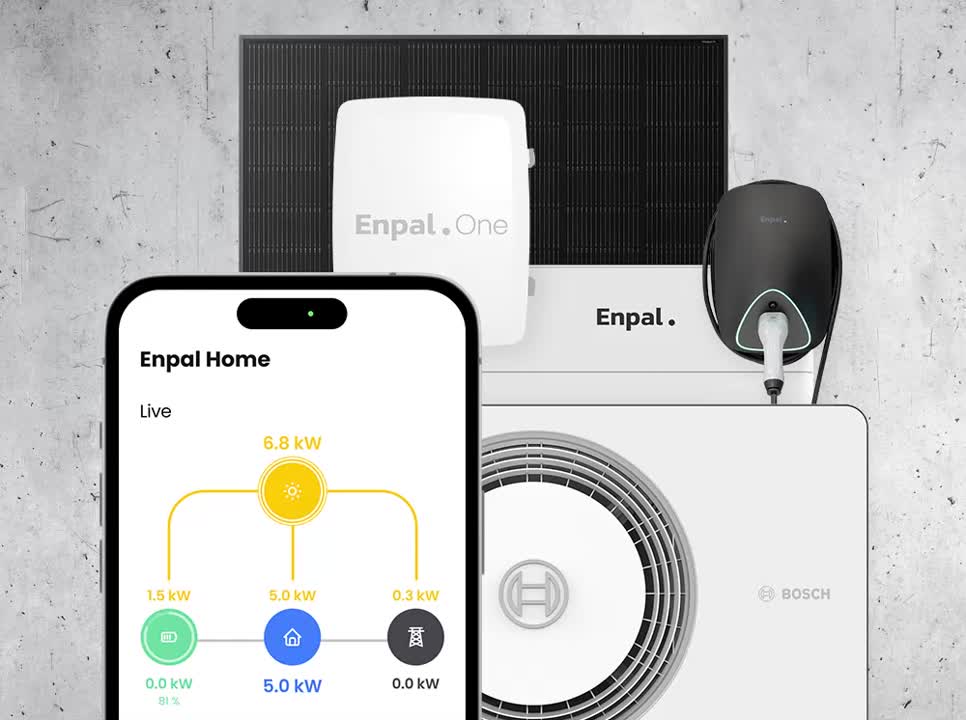2 years ago, I interned at a german startup called Enpal. The company is originally known for providing solar panels to homeowners. What set it apart from competition was that Enpal offered a leasing model for their solar systems. The companies’ customers do not have to pay the full costs upfront but instead pay a monthly fee over a 20-year period, after which they can choose to retain the solar system for no additional costs. Installation of the system is free and Enpal services it for no additional costs. Because of the energy crisis in 2022 (The European Energy Crisis: Shock Therapy for the EU’s Clean Energy Transition, n.d.) the business model quickly gained traction, and I was able to experience the companies hypergrowth. However, what makes Enpal so remarkable is that the company evolved beyond just solar panels and power storage. Shortly after I left, the company expanded its product portfolio by also offering heat pumps and Wallboxes (for charging EVs). Their goal is to become an affordable one-stop shop for all energy needs of a household.
To interconnect all their products Enpal created an App which allows users to optimize their energy consumption. The App serves as a central platform for managing the household’s energy system. It provides users with real-life insights into their solar energy production, energy consumption patterns, and stats of interconnected devices like the Wallbox or heat pump. Moreover, the App offers recommendations on when to store generated energy, when to use it, and when to feed it back into the grid to earn money. Consequently, Enpals user interface offers full control over energy flow, helping homeowners to reduce costs and boost efficiency (Enpal, n.d.).
But in the close future Enpals business model will become even more interesting. The company recently announced that it wants to connect all installed Enpal systems into a virtual power plant. This allows the company to participate in the German energy market on a large scale ensuring greater value for its customers. In simple terms, this means that when electricity prices are low or even negative, all Enpal households will absorb power, while when prices are high, they will feed electricity back into the grid. The key advantage of this collective approach, compared to individual households acting alone, is that it utilizes economies of scale, maximizing efficiency and profitability across the entire network (Enpal, 2024).
I believe this example clearly illustrates how a company, initially focused on selling a single asset, can create immense customer value through the introduction of a platform and the interconnection of its products.
References:
Enpal. (n.d.). Solaranlage kaufen: Das Angebot vom Marktführer | Enpal. https://www.enpal.de/
Enpal. (2024, September 17). Enpal on LinkedIn: #podcast #enpal #vpp #energiewende #newenergy | 21 comments [Video]. https://www.linkedin.com/posts/enpal_podcast-enpal-vpp-activity-7241692352803684353-WcI_?utm_source=share&utm_medium=member_desktop
The European energy crisis: Shock therapy for the EU’s clean energy transition. (n.d.). https://epc.eu/en/Publications/The-European-energy-crisis-Shock-therapy-for-the-EUs-clean-energy-tr~575954#:~:text=In%202022%2C%20Russia’s%20invasion%20of,to%20generate%20electricity%20from%20water.


It’s truly an interesting case based on your unique experience. I really like the idea that Enpal acts as an one-stop shop for all energy needs of a household, which increases the switching cost of users and enhances the consumers’ loyalty. Combining Enpal systems into a virtual power plant also create an platform connecting energy users and physical plants, benefiting from the positive network effect in the long run. I believe there will be a huge market potential for Enpal, as it is building a green power supply ecosystem.